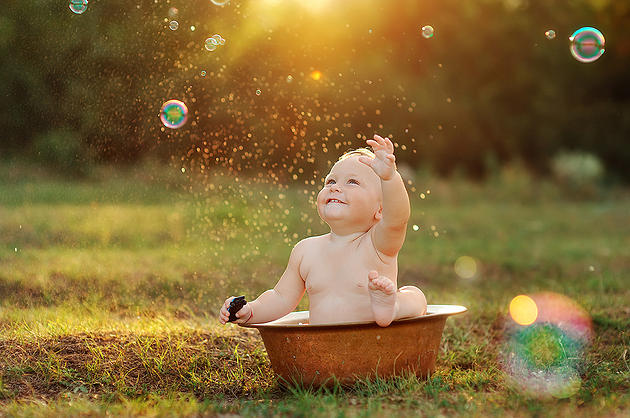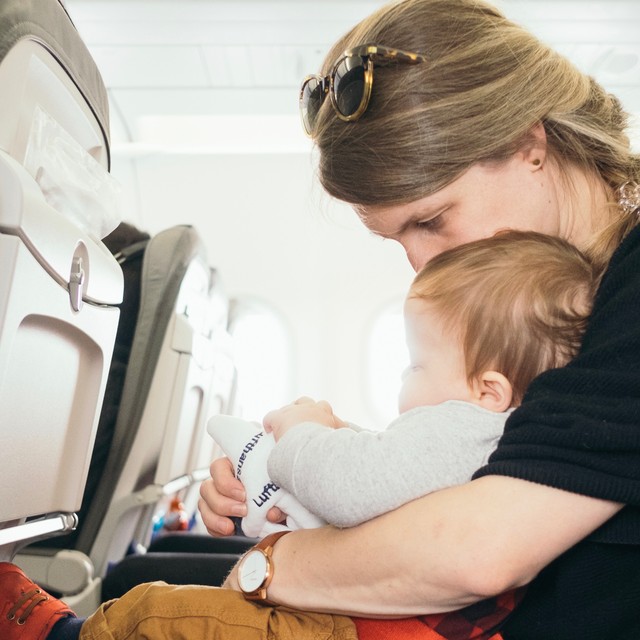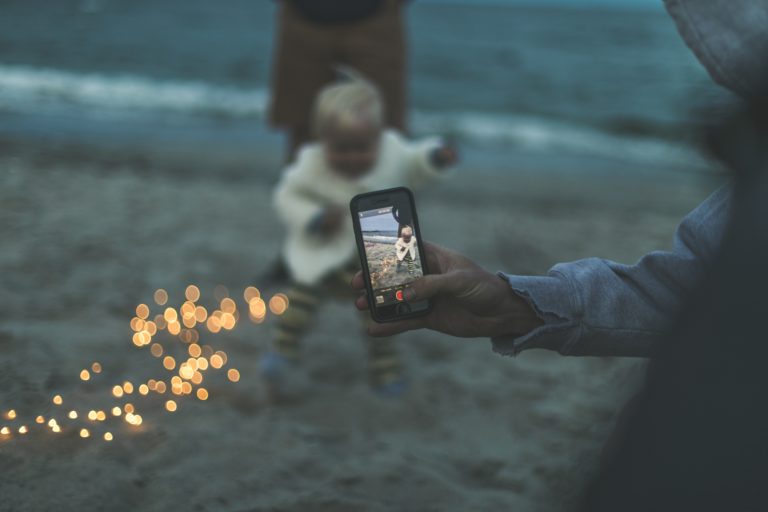Sun and Water Safety Tips
FUN IN THE SUN
Babies under 6 months:
-
The two main recommendations from the AAP to prevent sunburn are to avoid sun exposure, and to dress infants in lightweight long pants, long-sleeved shirts, and brimmed hats that shade the neck to prevent sunburn. However, when adequate clothing and shade are not available, parents can apply a minimal amount of sunscreen with at least 15 SPF (sun protection factor) to small areas, such as the infant’s face and the back of the hands. If an infant gets sunburn, apply cool compresses to the affected area.
For All Other Children:
-
The first, and best, line of defense against harmful ultraviolet radiation (UVR) exposure is covering up. Stay in the shade whenever possible, and limit sun exposure during the peak intensity hours – between 10 a.m. and 4 p.m.
-
Wear a hat with a three-inch brim or a bill facing forward, sunglasses (look for sunglasses that provide 97% -100% protection against both UVA and UVB rays), and clothing with a tight weave.
-
On both sunny and cloudy days use a sunscreen with an SPF 15 or greater that protects against UVA and UVB rays.
-
Be sure to apply enough sunscreen — about one ounce per sitting for a young adult.
-
Reapply sunscreen every two hours, or after swimming or sweating.
-
Use extra caution near water and sand (and even snow!) as they reflect UV rays and may result in sunburn more quickly.

HEAT STRESS IN EXERCISING CHILDREN
-
The intensity of activities that last 15 minutes or more should be reduced whenever high heat or humidity reach critical levels.
-
At the beginning of a strenuous exercise program or after traveling to a warmer climate, the intensity and duration of outdoor activities should start low and then gradually increase over 7 to 14 days to acclimate to the heat, particularly if it is very humid.
-
Before outdoor physical activities, children should drink freely and should not feel thirsty. During activities less than one hour, water alone is fine. Kids should always have water or a sports drink available and take a break to drink every 20 minutes while active in the heat.
-
Clothing should be light-colored and lightweight and limited to one layer of absorbent material to facilitate evaporation of sweat. Sweat-saturated shirts should be replaced by dry clothing.
-
Practices and games played in the heat should be shortened and there should be more frequent water/hydration breaks. Children should promptly move to cooler environments if they feel dizzy, lightheaded or nauseous.
HEAT STRESS IN INFANTS
Infants and small children are not able to regulate their body temperature in the same way that adults do. Every year, children die from heat stroke from being left in a hot car, often unintentionally, with the majority of these deaths occurring in children 3 and under. Here are a few tips for parents when traveling in a car with infants or young children:
-
Always check the back seat to make sure all children are out of the car when you arrive at your destination.
-
Avoid distractions while driving, especially cell phone use.
-
Be especially aware of kids in the car when there is a change from the routine, ie. someone else is driving them in the morning, you take a different route to work or child care.
-
Have your childcare provider call if your child has not arrived within 10 minutes of the expected arrival time.
-
Place you cell phone, bag or purse in the back seat, so you are reminded to check the back seat when you arrive at your destination.
POOL SAFETY
-
Never leave children alone in or near the pool or spa, even for a moment; close supervision by a responsible adult is the best way to prevent drowning in children.
-
Whenever children under age 5 are in or around water, an adult – preferably one who knows how to swim and perform CPR – should be within arm’s length, providing “touch supervision.”
-
Install a fence at least 4 feet high around all four sides of the pool. The fence should not have openings or protrusions that a young child could use to get over, under, or through.
-
Make sure pool gates open out from the pool, and self-close and self-latch at a height children can’t reach. Consider alarms on the gate to alert you when someone opens the gate. Consider surface wave or underwater alarms as an added layer of protection.
-
The safest fence is one that surrounds all 4 sides of the pool and completely separates the pool from the house and yard. If the house serves as the fourth side of the fence, install an alarm on the exit door to the yard and the pool. For additional protection, install window guards on windows facing the pool. Drowning victims have also used pet doors to gain access to pools. Keep all of your barriers and alarms in good repair with fresh batteries.
-
Keep rescue equipment (a shepherd’s hook – a long pole with a hook on the end — and life preserver) and a portable telephone near the pool. Choose a shepherd’s hook and other rescue equipment made of fiberglass or other materials that do not conduct electricity.
-
Avoid inflatable swimming aids such as “floaties.” They are not a substitute for approved life vests and can give children and parents a false sense of security.
-
Children over age 1 may be at a lower risk of drowning if they have had some formal swimming instruction. However, there is no evidence that swimming lessons or water survival skills courses can prevent drowning in babies younger than 1 year of age.
-
The decision to enroll a child over age one in swimming lessons should be made by the parent based on the child’s developmental readiness and exposure to water, but swim programs should never be seen as “drown proofing” a child of any age.
-
Avoid entrapment: Suction from pool and spa drains can trap a swimmer underwater. Do not use a pool or spa if there are broken or missing drain covers. Ask your pool operator if your pool or spa’s drains are compliant with the Pool and Spa Safety Act. If you have a swimming pool or spa, ask your pool service representative to update your drains and other suction fitting with anti-entrapment drain covers and other devices or systems. See PoolSafely.gov for more information on the Virginia Graeme Baker Pool and Spa Safety Act.
-
Large, inflatable, above-ground pools have become increasingly popular for backyard use. Children may fall in if they lean against the soft side of an inflatable pool. Although such pools are often exempt from local pool fencing requirements, it is essential that they be surrounded by an appropriate fence just as a permanent pool would be so that children cannot gain unsupervised access.
-
If a child is missing, look for him or her in the pool or spa first.
-
Share safety instructions with family, friends and neighbors.
BOATING SAFETY
-
Children should wear life jackets at all times when on boats, docks or near bodies of water.
-
Make sure the life jacket is the right size for your child. The jacket should not be loose and should always be worn as instructed with all straps belted.
-
Blow-up water wings, toys, rafts and air mattresses should not be used as life jackets or personal flotation devices. Adults should wear life jackets for their own protection, and to set a good example.
-
Adolescents and adults should be warned of the dangers of boating even as a passenger when under the influence of alcohol, drugs, and even some prescription medications.
OPEN WATER SWIMMING
-
Never swim alone. Even good swimmers need buddies!
-
A lifeguard (or another adult who knows about water rescue) needs to be watching children whenever they are in or near the water. Younger children should be closely supervised while in or near the water – use “touch supervision,” keeping no more than an arm’s length away.
-
Make sure your child knows never to dive into water except when permitted by an adult who knows the depth of the water and who has checked for underwater objects.
-
Never let your child swim in canals or any fast moving water.
-
Ocean swimming should only be allowed when a lifeguard is on duty.
-
Teach children about rip currents. If you are caught in a rip current, swim parallel to shore until you escape the current, and then swim back to shore.
For more tips on sun and water safety, visit www.healthychildren.org
Copyright © 2015 American Academy of Pediatrics. Shared with permission.






